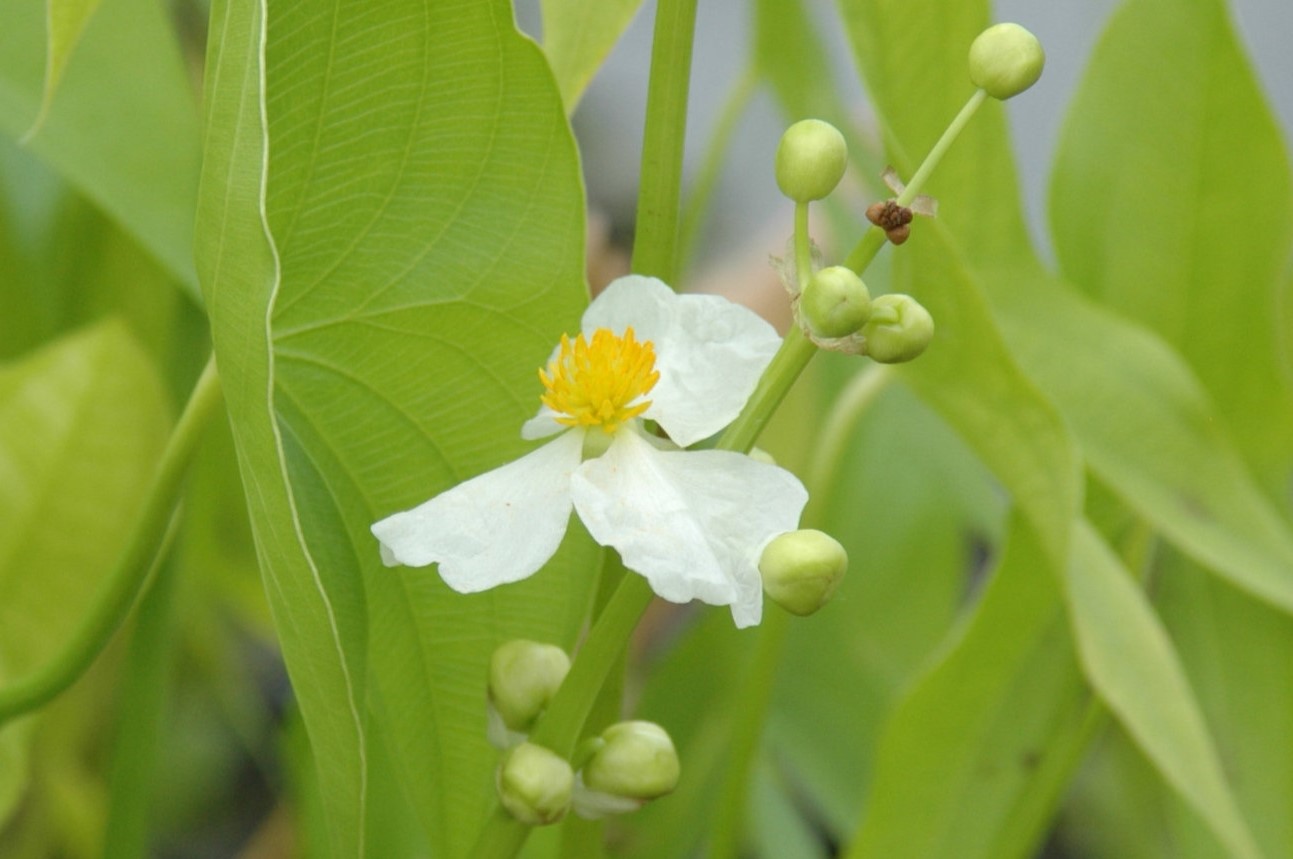
Broad-Leaf Arrowhead, also known as Sagittaria latifolia, is a fascinating aquatic plant found in wetlands across North America. This plant is famous for its distinct arrow-shaped leaves and beautiful white flowers. But what makes Broad-Leaf Arrowhead so special? For starters, it plays a crucial role in wetland ecosystems by providing habitat and food for various wildlife, including ducks and muskrats. Additionally, its tubers are edible and were a staple food for many Native American tribes. Whether you're a nature enthusiast, gardener, or just curious about unique plants, learning about Broad-Leaf Arrowhead can be both fun and educational. Let's dive into 20 intriguing facts about this remarkable plant!
Key Takeaways:
- Broad-Leaf Arrowhead, also known as Sagittaria latifolia, is a native North American plant with arrow-shaped leaves and edible tubers. It provides shelter for wildlife and helps improve water quality in its habitat.
- This fascinating aquatic plant has cultural significance as a traditional medicine and ornamental plant. It symbolizes resilience and adaptability, and scientists are studying its potential in cleaning contaminated water and soil.
What is Broad-Leaf Arrowhead?
Broad-Leaf Arrowhead, also known as Sagittaria latifolia, is a fascinating aquatic plant. Found in wetlands, marshes, and shallow waters, this plant has some intriguing characteristics.
-
Native to North America: Broad-Leaf Arrowhead is indigenous to North America, thriving in various regions from Canada to Mexico.
-
Distinctive Arrow-Shaped Leaves: The plant gets its name from its unique arrow-shaped leaves, which can grow up to 30 cm long.
-
Edible Tubers: Native Americans used the plant's tubers as a food source. These tubers are rich in starch and can be boiled or roasted.
-
White Flowers: It produces beautiful white flowers with three petals, often blooming in late summer.
-
Pollinated by Insects: Bees and other insects play a crucial role in pollinating Broad-Leaf Arrowhead, ensuring the plant's reproduction.
Habitat and Growth
Understanding where and how Broad-Leaf Arrowhead grows can provide insight into its ecological importance.
-
Prefers Shallow Waters: This plant thrives in shallow waters, typically less than 1 meter deep, making it common in ponds and marshes.
-
Tolerates Various Soil Types: Broad-Leaf Arrowhead can grow in different soil types, including clay, sand, and loam.
-
Spreads Through Rhizomes: The plant spreads by rhizomes, which are underground stems that produce new shoots and roots.
-
Forms Dense Colonies: Over time, it can form dense colonies, providing habitat for various aquatic animals.
-
Helps Prevent Erosion: The plant's root system helps stabilize soil, reducing erosion along water bodies.
Ecological Importance
Broad-Leaf Arrowhead plays a significant role in its ecosystem, benefiting both flora and fauna.
-
Provides Shelter: The dense foliage offers shelter for fish, amphibians, and invertebrates.
-
Food Source for Wildlife: Ducks, geese, and other waterfowl feed on the plant's seeds and tubers.
-
Improves Water Quality: By absorbing nutrients and pollutants, Broad-Leaf Arrowhead helps improve water quality in its habitat.
-
Supports Biodiversity: The plant supports a diverse range of species, contributing to the overall health of wetland ecosystems.
-
Indicator of Wetland Health: The presence of Broad-Leaf Arrowhead can indicate a healthy wetland environment.
Human Uses and Cultural Significance
Beyond its ecological role, Broad-Leaf Arrowhead has been utilized by humans in various ways.
-
Traditional Medicine: Some Native American tribes used the plant for medicinal purposes, treating ailments like wounds and digestive issues.
-
Ornamental Use: Due to its attractive appearance, Broad-Leaf Arrowhead is sometimes used in water gardens and ornamental ponds.
-
Historical Food Source: The plant's tubers were a staple food for many indigenous peoples, often referred to as "duck potatoes."
-
Cultural Symbolism: In some cultures, the plant symbolizes resilience and adaptability due to its ability to thrive in challenging environments.
-
Modern Research: Scientists are studying Broad-Leaf Arrowhead for its potential in phytoremediation, using plants to clean contaminated water and soil.
Final Thoughts on Broad-Leaf Arrowhead
Broad-Leaf Arrowhead, also known as Sagittaria latifolia, is a fascinating plant with a rich history and many uses. Found in wetlands across North America, this plant has arrow-shaped leaves and produces edible tubers. Native Americans utilized these tubers as a food source, often calling them "duck potatoes." The plant also plays a crucial role in its ecosystem, providing habitat and food for various wildlife, including ducks and muskrats.
Beyond its ecological importance, Broad-Leaf Arrowhead has medicinal properties. Traditional remedies used it to treat ailments like wounds and digestive issues. Gardeners appreciate its aesthetic appeal and ability to thrive in water gardens.
Understanding the significance of Broad-Leaf Arrowhead enriches our appreciation for nature's diversity. Whether you're a gardener, a history buff, or just curious, this plant offers something intriguing for everyone. Keep exploring, and you'll uncover even more about this remarkable species.
Frequently Asked Questions
Was this page helpful?
Our commitment to delivering trustworthy and engaging content is at the heart of what we do. Each fact on our site is contributed by real users like you, bringing a wealth of diverse insights and information. To ensure the highest standards of accuracy and reliability, our dedicated editors meticulously review each submission. This process guarantees that the facts we share are not only fascinating but also credible. Trust in our commitment to quality and authenticity as you explore and learn with us.


